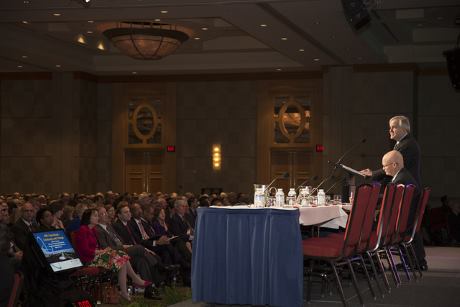US regulatory structure no hindrance to new technology
11 March 2016
The USA's nuclear regulatory structure will not hinder the implementation of new advanced reactor technology, US Nuclear Regulatory Commission (NRC) chairman Stephen Burns told the regulator's annual public conference this week.
 |
| NRC chairman Stephen Burns addresses RIC 2016 (Image: NRC) |
"While the benefits [of small modular reactors (SMRs) and advanced reactors] are not for the NRC to tout, we can work well to ensure that the public trusts us to do the right thing when these new ideas and new applications come to us for review and possible licensing," Burns said in his introductory comments to the NRC's 28th annual Regulatory Information Conference (RIC), held in Bethesda, Maryland earlier this week.
He went on to add that within its current framework the regulator has been working with NuScale in preparation for an expected design certification application for the company's SMR by the end of the year. An early site permit from the Tennessee Valley Authority is expected later this spring, he said.
The NRC's 2017 budget proposal includes $5 million for developing regulatory infrastructure for advanced non-light water reactor technologies, Burns noted. "This is an arena in which we can exhibit our regulatory craftsmanship - assessing risk, balancing risk and regulation, setting boundaries without stifling innovation," he said.
Burns said that the regulator must ensure adequate and effective regulation while using its resources as well as possible. He pointed to Project Aim - the NRC's program to improve efficiency and efficacy while streamlining processes and limiting costs through the most responsible and effective use of NRC resources - as a key part of the agency's future work.
Researched and written
by World Nuclear News